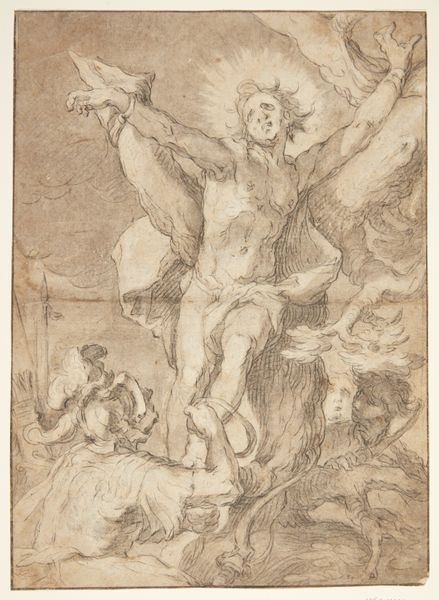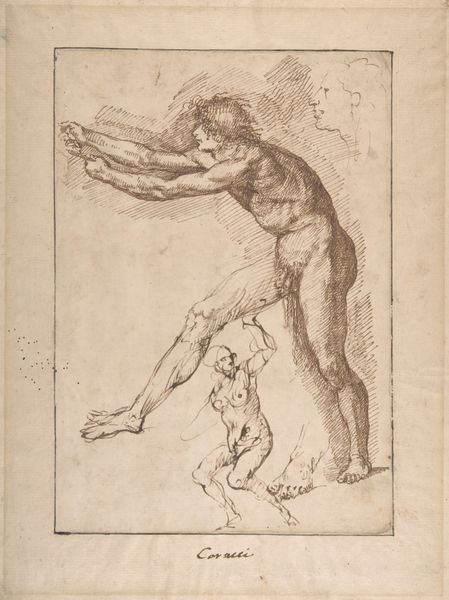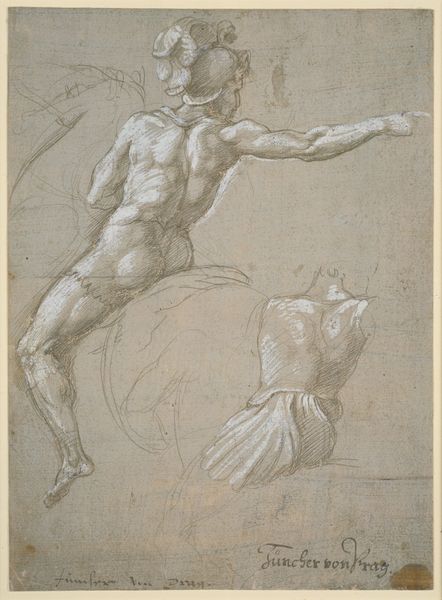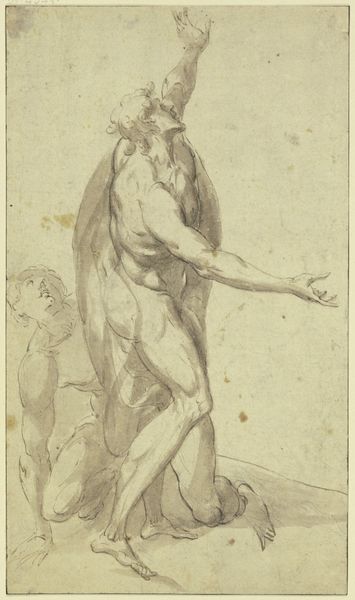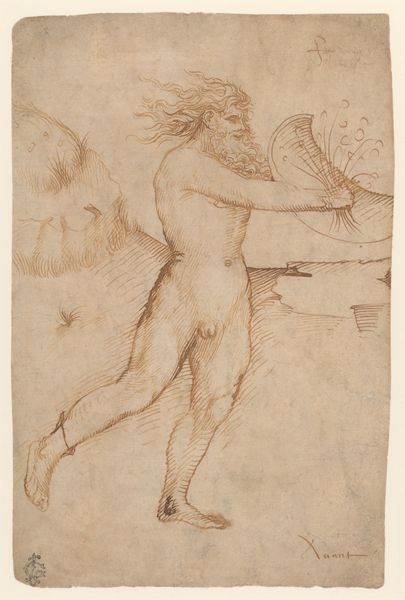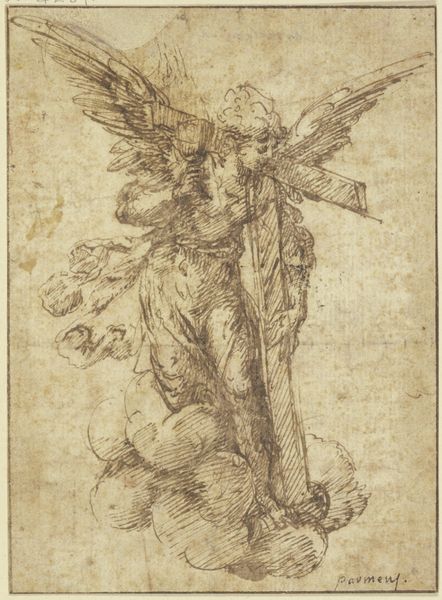
The Apples of the Hesperides, from "The Labors of Hercules" 1600 - 1700
0:00
0:00
drawing, print, ink
#
drawing
#
allegory
# print
#
figuration
#
ink
#
line
#
history-painting
#
academic-art
Dimensions: 8-3/16 x 5-7/8 in. (20.8 x 14.9 cm)
Copyright: Public Domain
Editor: This ink drawing from between 1600 and 1700 is titled "The Apples of the Hesperides, from "The Labors of Hercules". It has an energetic, unfinished quality. I'm curious – what socio-political contexts might have informed this depiction of Hercules? Curator: Considering the drawing's title, it's hard not to view Hercules as a figure entangled in a power dynamic, isn't it? The Hesperides and their apples are symbols. We must question: what exactly do those golden apples represent within a patriarchal society, and how does Hercules’ quest relate to historical dynamics? Does he steal those golden apples from a sisterhood who knows their true worth? Editor: That's interesting – so, beyond a simple heroic narrative, are you suggesting the artwork may symbolize the theft of knowledge or power from a marginalized group? Curator: Precisely! Think about how historical narratives are often framed to glorify conquest, sidelining the perspectives and values of the conquered. How does the visual representation of Hercules - his dominant pose and forceful reaching - contribute to this potentially problematic reading? Editor: I see what you mean. The dragon he's stepping on also represents something oppressed, adding more symbolic weight to the idea. It sounds like this drawing allows for complex interpretations beyond the surface story. Curator: Indeed. By examining the artwork through the lens of gender, power, and historical context, we can excavate deeper meanings that resonate even today. Art invites critical engagement with the dominant narratives we inherit. Editor: Thanks, I never considered how a story like Hercules might also be about suppression! Curator: I am thrilled you now see this in a new light; history is always a contested narrative.
Comments
No comments
Be the first to comment and join the conversation on the ultimate creative platform.
